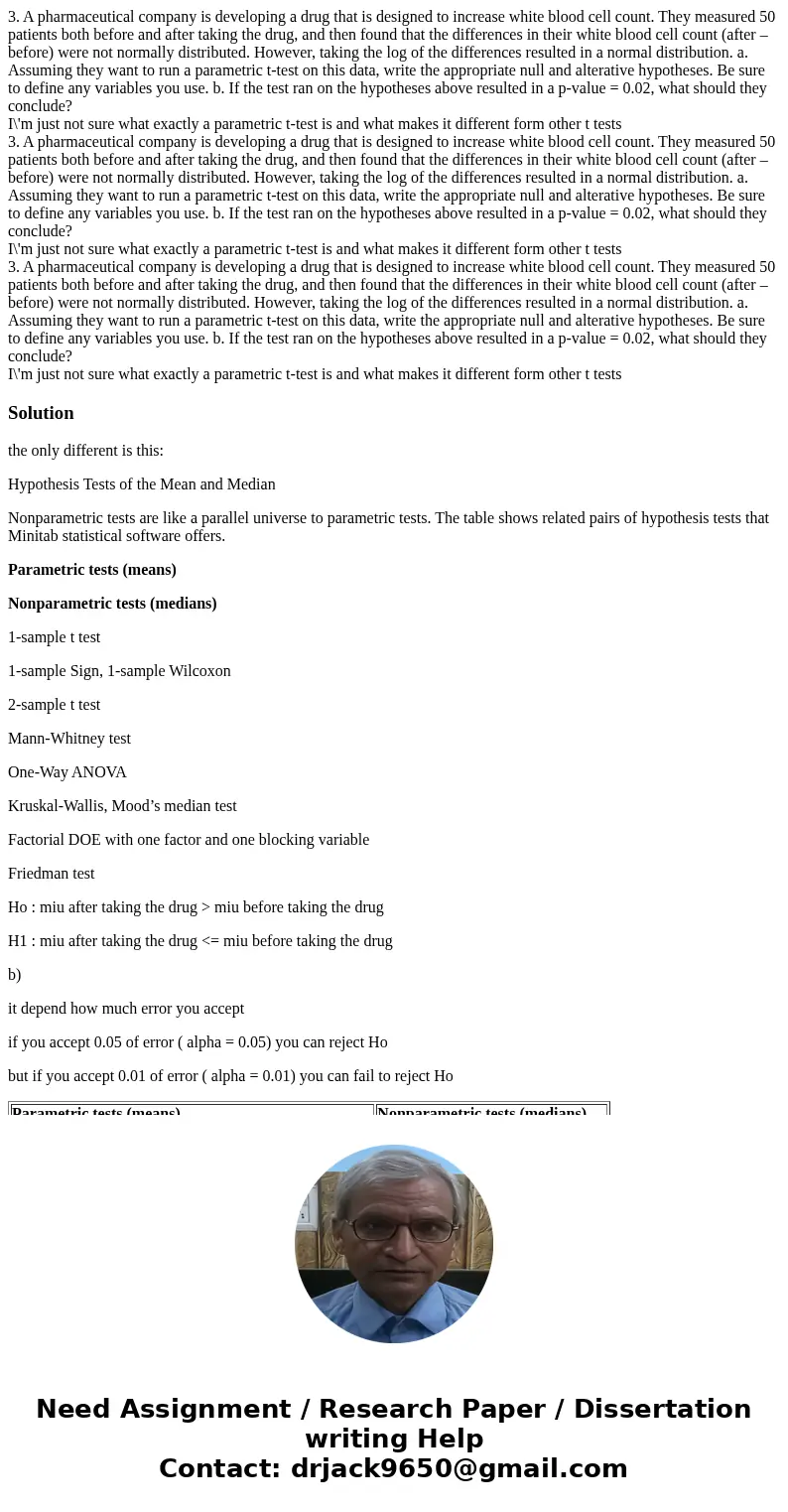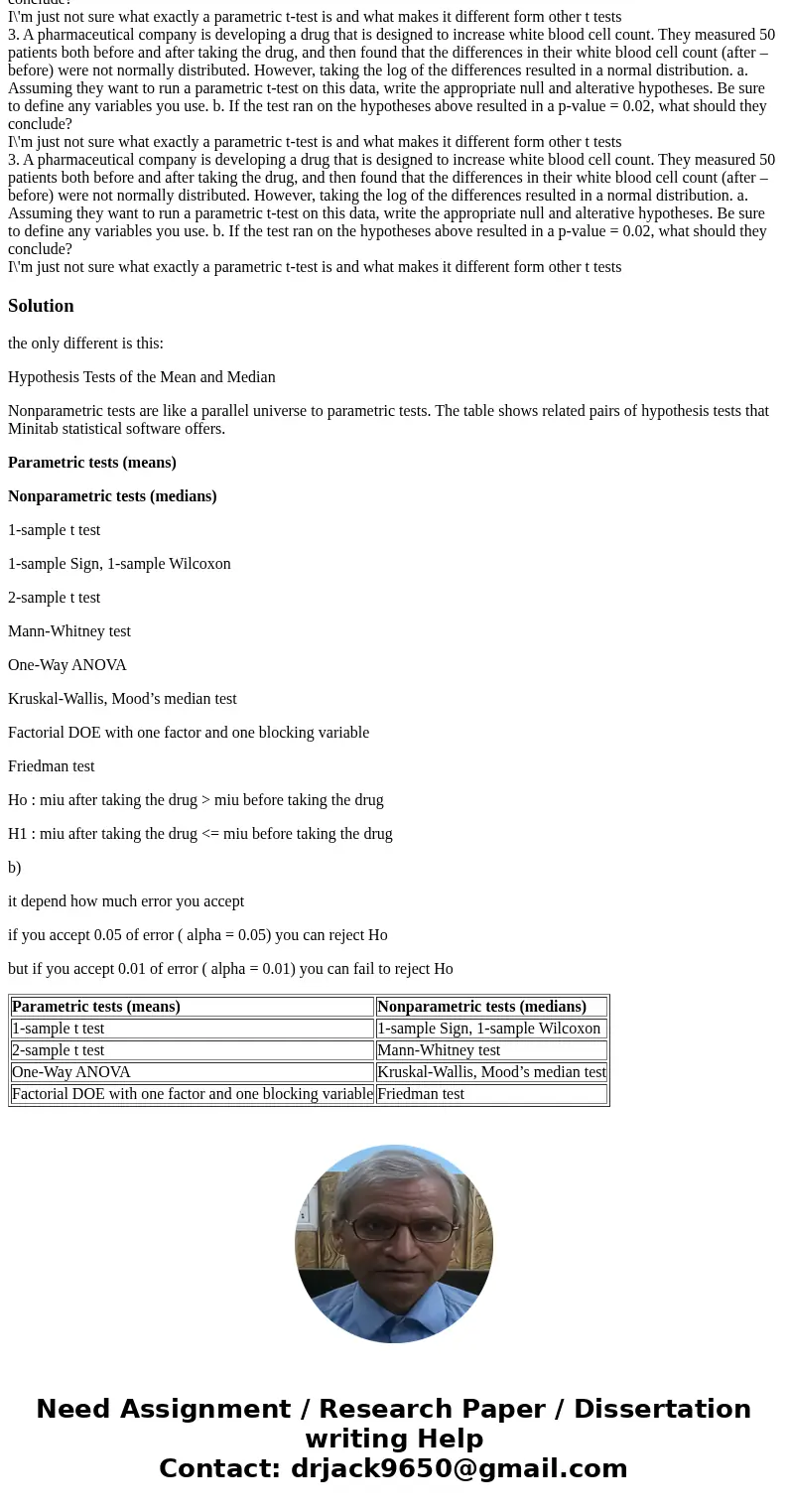3. A pharmaceutical company is developing a drug that is designed to increase white blood cell count. They measured 50 patients both before and after taking the drug, and then found that the differences in their white blood cell count (after – before) were not normally distributed. However, taking the log of the differences resulted in a normal distribution. a. Assuming they want to run a parametric t-test on this data, write the appropriate null and alterative hypotheses. Be sure to define any variables you use. b. If the test ran on the hypotheses above resulted in a p-value = 0.02, what should they conclude?
I\'m just not sure what exactly a parametric t-test is and what makes it different form other t tests
3. A pharmaceutical company is developing a drug that is designed to increase white blood cell count. They measured 50 patients both before and after taking the drug, and then found that the differences in their white blood cell count (after – before) were not normally distributed. However, taking the log of the differences resulted in a normal distribution. a. Assuming they want to run a parametric t-test on this data, write the appropriate null and alterative hypotheses. Be sure to define any variables you use. b. If the test ran on the hypotheses above resulted in a p-value = 0.02, what should they conclude?
I\'m just not sure what exactly a parametric t-test is and what makes it different form other t tests
3. A pharmaceutical company is developing a drug that is designed to increase white blood cell count. They measured 50 patients both before and after taking the drug, and then found that the differences in their white blood cell count (after – before) were not normally distributed. However, taking the log of the differences resulted in a normal distribution. a. Assuming they want to run a parametric t-test on this data, write the appropriate null and alterative hypotheses. Be sure to define any variables you use. b. If the test ran on the hypotheses above resulted in a p-value = 0.02, what should they conclude?
I\'m just not sure what exactly a parametric t-test is and what makes it different form other t tests
the only different is this:
Hypothesis Tests of the Mean and Median
Nonparametric tests are like a parallel universe to parametric tests. The table shows related pairs of hypothesis tests that Minitab statistical software offers.
Parametric tests (means)
Nonparametric tests (medians)
1-sample t test
1-sample Sign, 1-sample Wilcoxon
2-sample t test
Mann-Whitney test
One-Way ANOVA
Kruskal-Wallis, Mood’s median test
Factorial DOE with one factor and one blocking variable
Friedman test
Ho : miu after taking the drug > miu before taking the drug
H1 : miu after taking the drug <= miu before taking the drug
b)
it depend how much error you accept
if you accept 0.05 of error ( alpha = 0.05) you can reject Ho
but if you accept 0.01 of error ( alpha = 0.01) you can fail to reject Ho
| Parametric tests (means) | Nonparametric tests (medians) |
| 1-sample t test | 1-sample Sign, 1-sample Wilcoxon |
| 2-sample t test | Mann-Whitney test |
| One-Way ANOVA | Kruskal-Wallis, Mood’s median test |
| Factorial DOE with one factor and one blocking variable | Friedman test |


 Homework Sourse
Homework Sourse